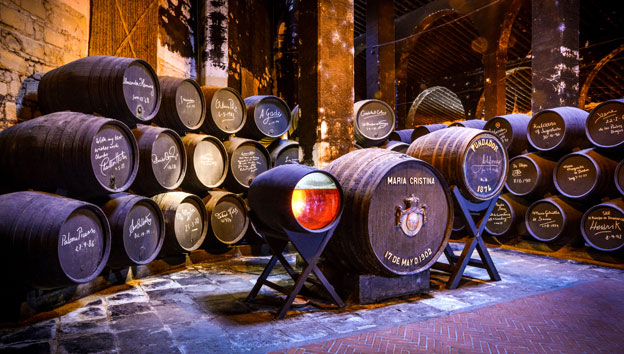
Sherry, a fortified wine hailing from the Jerez region of Spain, has long been a favorite of British palates. Let's delve into the rich history of England's relationship with Sherry, tracing its origins, development, and current status in the world of wine.
Origins: The Early Days of Sherry in England
The love affair between England and Sherry began in the 12th century when the Moors, who ruled the Iberian Peninsula, introduced the wine to the British. The connection was further solidified in 1340 when the English fleet, led by Edward III, captured Jerez and its surrounding areas. The British quickly developed a taste for the local wine, which they called "sherris sack," a precursor to the modern term "sherry."
In 1587, Sir Francis Drake famously raided the Spanish port of Cádiz, seizing over 2,900 barrels of sherry and introducing it to a wider English audience. This event marked the beginning of a strong commercial relationship between England and the Jerez region, with sherry becoming a popular import and a staple of British drinking culture.
The Golden Age: 18th and 19th Centuries
The 18th and 19th centuries saw an explosion in the popularity of sherry in England. British merchants, such as the House of Sandeman, established bodegas (wine cellars) in Jerez and began exporting large quantities of sherry to England. The wine's popularity was further boosted by the rise of the British Empire, which expanded its reach across the globe, taking sherry along with it.
During this time, sherry became an essential part of British social life. It was consumed by all classes, from the working class in pubs to the upper class in private clubs and drawing rooms. The wine was even immortalized in literature, with characters such as Shakespeare's Falstaff and Dickens' Mr. Pickwick extolling the virtues of sherry.

The 20th Century: A Changing Landscape
The 20th century brought about significant changes to the world of sherry. The wine's popularity began to wane in the face of competition from other alcoholic beverages, such as whiskey and gin. Additionally, the Spanish Civil War and World War II disrupted the sherry trade, further contributing to its decline in popularity.
Despite these challenges, sherry continued to hold a special place in the hearts of many British drinkers. The wine remained a popular choice for toasting special occasions and was often served at weddings and other celebrations.
Sherry Today: A Resurgence in Popularity
In recent years, sherry has experienced something of a renaissance in England. A new generation of wine enthusiasts has discovered the unique flavors and versatility of sherry, leading to a resurgence in its popularity. Sherry bars and specialist retailers have popped up across the country, and the wine has found its way onto the menus of some of the UK's top restaurants.
Modern sherry is now produced in a wide range of styles, from the light and crisp fino to the rich and nutty oloroso. This diversity has made sherry an increasingly popular choice for pairing with food, and it has become a favorite of sommeliers and chefs alike.
The relationship between England and Sherry is a long and storied one, spanning centuries of shared history and cultural exchange. From its early introduction to the British Isles to its current resurgence in popularity, sherry has remained an enduring symbol of the close ties between these two nations. As the world of wine continues to evolve, it seems likely that the love affair between England and Sherry will continue to flourish for many years to come.